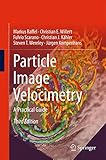Particle Image Velocimetry [electronic resource] : A Practical Guide / by Markus Raffel, Christian E. Willert, Fulvio Scarano, Christian J. Kähler, Steve T. Wereley, Jürgen Kompenhans.
By: Raffel, Markus [author.] .
.
Contributor(s): Willert, Christian E [author.] | Scarano, Fulvio [author.]
| Scarano, Fulvio [author.] | Kähler, Christian J [author.]
| Kähler, Christian J [author.] | Wereley, Steve T [author.]
| Wereley, Steve T [author.] | Kompenhans, Jürgen [author.]
| Kompenhans, Jürgen [author.] | SpringerLink (Online service)
| SpringerLink (Online service) .
.
Material type:  BookPublisher: Cham : Springer International Publishing : Imprint: Springer, 2018Edition: 3rd ed. 2018.Description: XXVI, 669 p. 434 illus., 164 illus. in color. online resource.Content type: text Media type: computer Carrier type: online resourceISBN: 9783319688527.Subject(s): Fluid mechanics
BookPublisher: Cham : Springer International Publishing : Imprint: Springer, 2018Edition: 3rd ed. 2018.Description: XXVI, 669 p. 434 illus., 164 illus. in color. online resource.Content type: text Media type: computer Carrier type: online resourceISBN: 9783319688527.Subject(s): Fluid mechanicsPhysical and Technical Background -- Mathematical Background of Statistical PIV Evaluation -- PIV Recording Techniques -- Image Evaluation Methods for PIV -- Post-Processing of PIV Data -- Three-Component PIV Measurements -- Micro-PIV -- Examples of Application -- Related Techniques.
This practical guide provides comprehensive information on PIV. The third edition extends many aspects of Particle image Velocimetry, in particular the tomographic PIV method, high-velocity PIV, Micro-PIV, and accuracy assessment. In this book, relevant theoretical background information directly support the practical aspects associated with the planning, performance and understanding of experiments employing the PIV technique. It is primarily intended for engineers, scientists and students, who already have some basic knowledge of fluid mechanics and non-intrusive optical measurement techniques. It shall guide researchers and engineers to design and perform their experiment successfully without requiring them to first become specialists in the field. Nonetheless many of the basic properties of PIV are provided as they must be well understood before a correct interpretation of the results is possible.


There are no comments for this item.